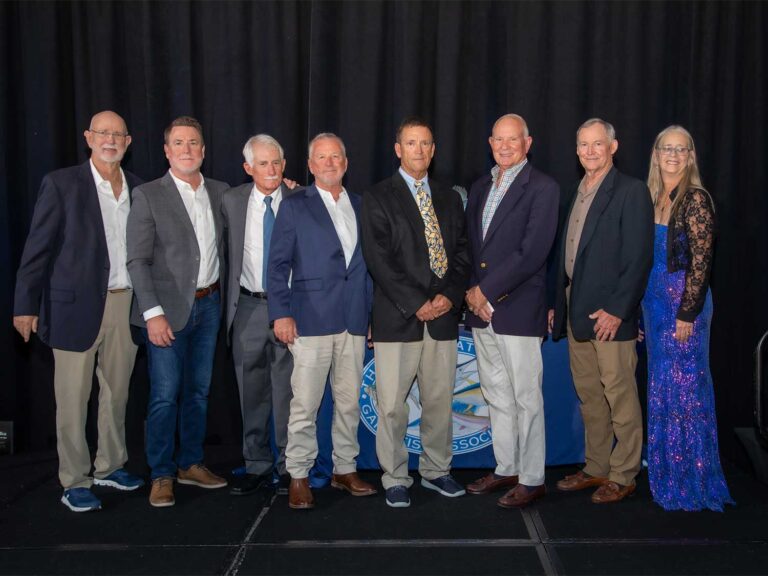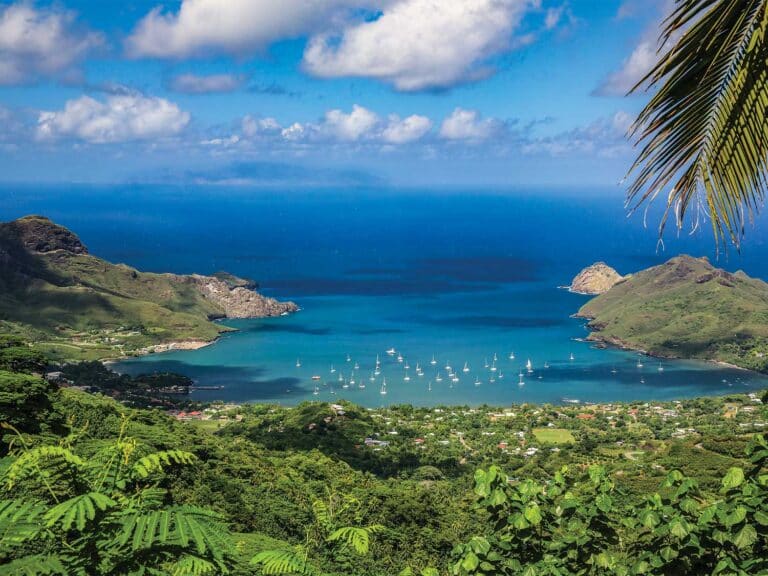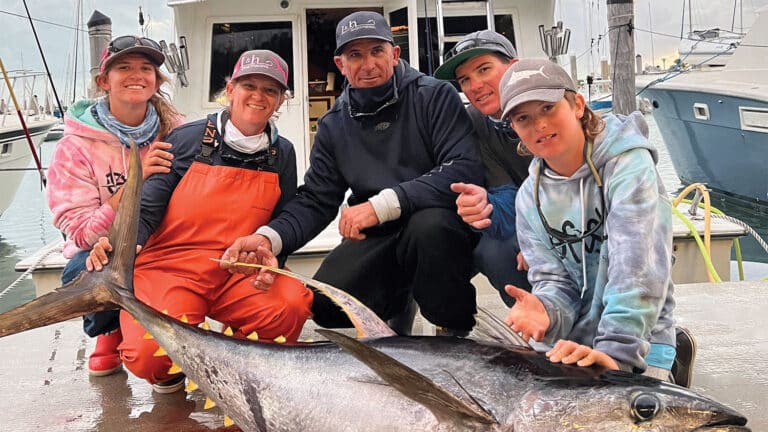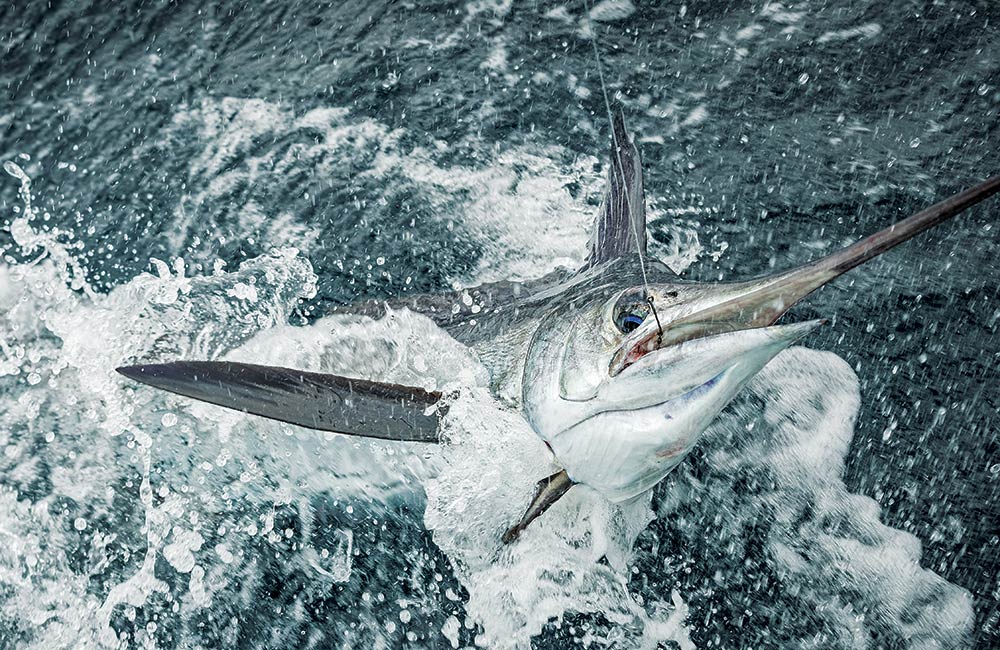
“White marlin fishing is an obsession,” says Mike Standing, a fourth-generation native of Virginia Beach, Virginia, and an avid bluewater fisherman, “even after 35 years chasing them.”
Forty-eight-year-old Standing is a hardworking former mate and charter captain with a singular passion for marlin fishing. He just so happens to also be a very successful restaurateur with three well-known establishments in Virginia Beach. I was lucky enough to catch up with him aboard Waterman, his 63-foot Scarborough, shortly after he returned from an extended winter trip fishing in the Bahamas and the Dominican Republic — he regaled me with stories about the unbelievable action on the way to the fishing grounds. During one of their best days fishing the FADs off the Dominican Republic with a couple of his friends and longtime fishing buddies — renowned Capt. Jimmy “The Teaser” Grant and top deckhand Richard Wright — they racked up 22 blues and two whites. However, it’s Standing’s knowledge of white marlin fishing out of his home port of Virginia Beach — and his willingness to share — that really piqued my interest to spend a day offshore with him.
The Obsession
Standing began offshore fishing with his father during his early teen years aboard the family’s 30-foot Black Watch. They won the small-boat divisions of the Ocean View Marlin Tournament and the Virginia Beach Small Boat Tournament three years in a row aboard that boat. During his college years at Clemson University, you could find Standing either hustling fish or mating on charter boats when he wasn’t working at Fogg’s Seafood Restaurant in Virginia Beach — his parents’ eatery.
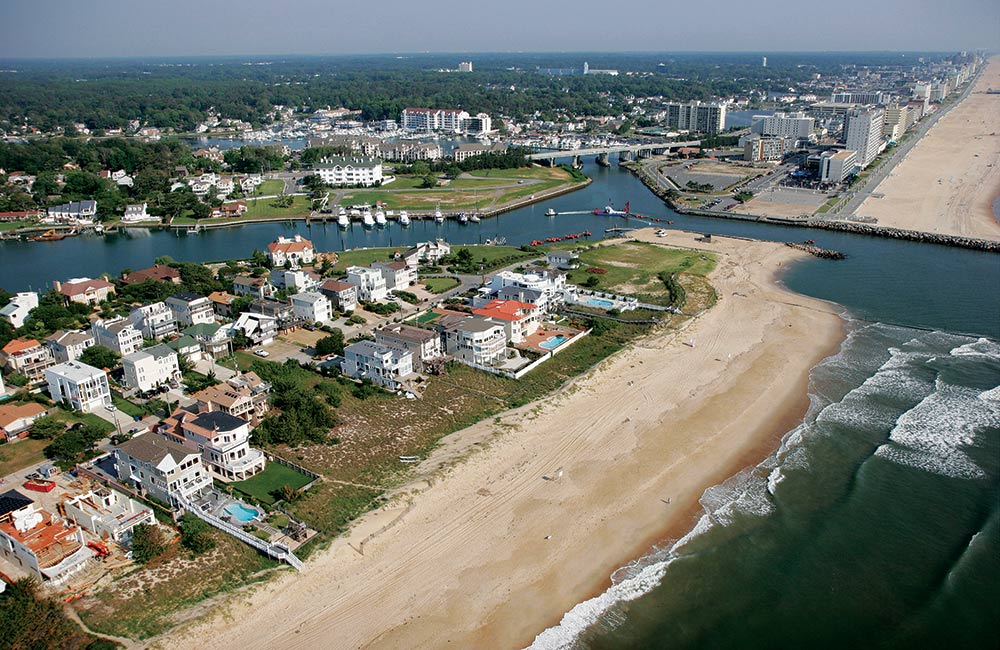
“By the age of 16, I had become an avid surfer and managed to scrape together the resources to travel to some pretty far-flung places to indulge,” he recounts. His pursuit of the perfect wave took him to the Cook Islands, Fiji, Australia, Indonesia, New Zealand, all through the Caribbean, and most of Central and South America. “I always seemed to get out fishing wherever I surfed. Most of those places were pretty much untouched back then, and it was fun and quite enlightening to see the different ways people fished,” says Standing.
After getting his captain’s license, Standing was running charter boats by day and working at the restaurant by night, often running more than 200 charter trips — both offshore and inshore — each year. He’s also owned an extensive list of boats along the way, including two Whiticars, an Alex Willis, a Rose Brothers and a 56-foot James Hudson before his current ride splashed in 2016: a ravishing 63-foot Scarborough that is his pride and joy. Standing bid farewell to charter fishing in 2013, and now strictly fishes for enjoyment as well as competing in a handful of tournaments in Virginia and North Carolina throughout the year.
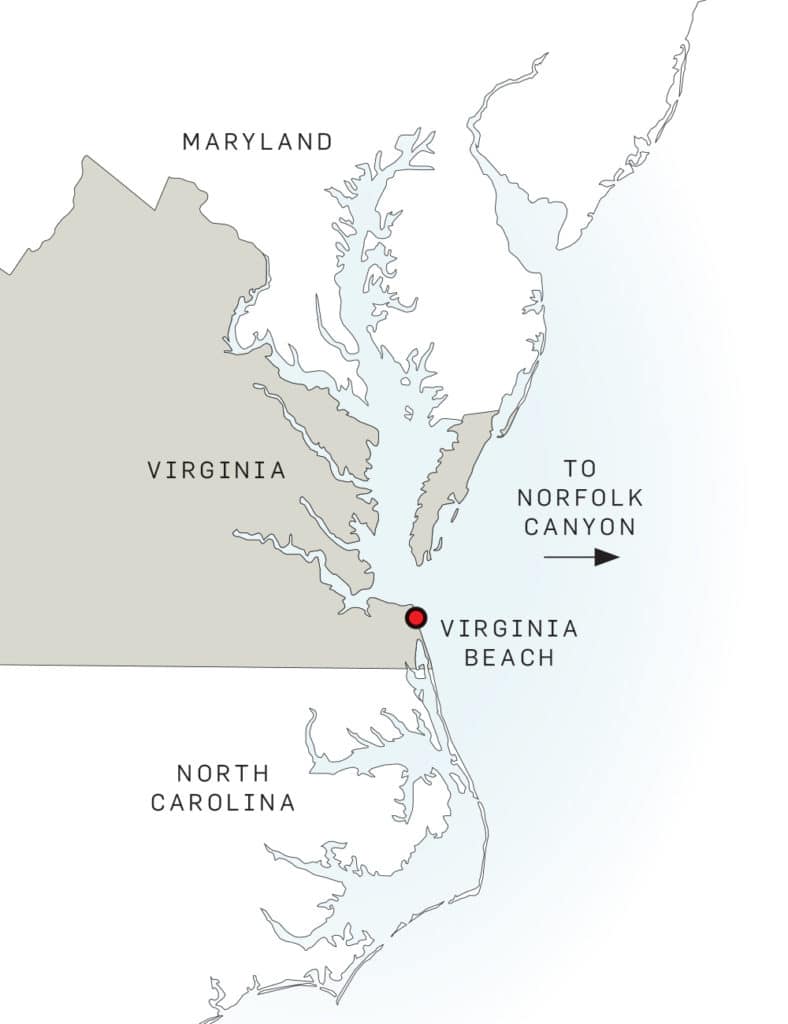
“It’s great fishing with friends and family now,” he confides. “Years ago it was all about selling fish to earn extra cash, working the cockpit of someone else’s sport-fishing boat, or running my own charter boats,” says Standing. “Although I’m pretty rusty, it’s been incredibly fun to be in the cockpit as an angler again. I still fish hard, but the rewards are different, and it’s more fulfilling to spend time fishing with my family.” He recalled a day last year when they released 18 whites in just an hour and a half of fishing with his kids. “I shouldn’t tell you this, but I actually encouraged them to skip school when the bite got hot,” he says.
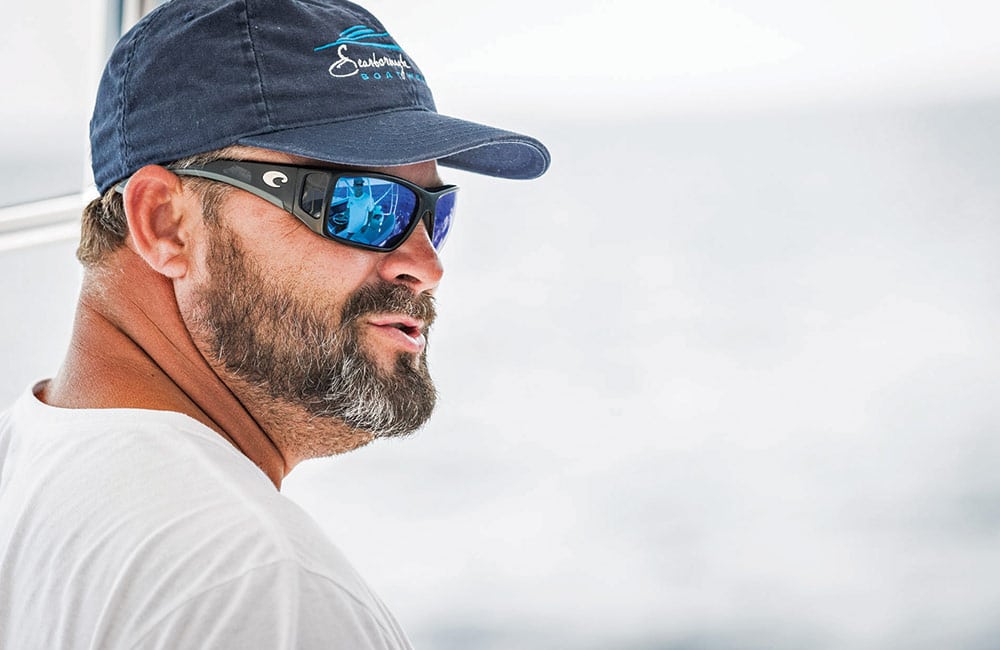
But despite all his winter fishing excursions on Waterman, Standing still considers his home waters off Virginia Beach a very special place with incredible fishing during white marlin season. “It’s just a cool place to be, and the offshore fishing is hard to beat,” he says with obvious pride. “During August and September, the fishing is phenomenal: You can rack up serious numbers, and since we are centrally located, it allows us to follow the fish whether they are in the northern, central or southern area of their summer range.”

And while he enjoys spending a little more time in the cockpit, Standing still embraces his time at the helm, and truly relishes putting his guests on fish and watching them enjoy the excitement of a jumping white marlin.
The Fishery
Virginia Beach is ideally situated in prime proximity to fish “White Marlin Central,” a large swath of the continental shelf that stretches from north of the Wilmington Canyon to south of the Norfolk Canyon. “The white marlin season can start as early as late June, and the fishing often builds through summer and well into September,” Standing says. “Exactly when the local fishing begins to heat up depends on two things happening.” The first is the arrival of vast schools of tinker mackerel gathering around the Norfolk Canyon area.

This relatively new style of live-bait fishing for white marlin kicks off the early marlin season as they follow mackerel into the area; these fish can be encountered feeding on schools of bait at depths up to 300 feet with rarely any visible surface activity. Anglers target the mackerel with small jigs with colorful tubes to fill the livewell, and then bridle them with floss to 7/0 in-line circle hooks. The baits are then slow-trolled just fast enough to keep them swimming well behind the boat to raise whites to the surface: The strikes can be savage, and the action can be really fast and furious when the bite is on.
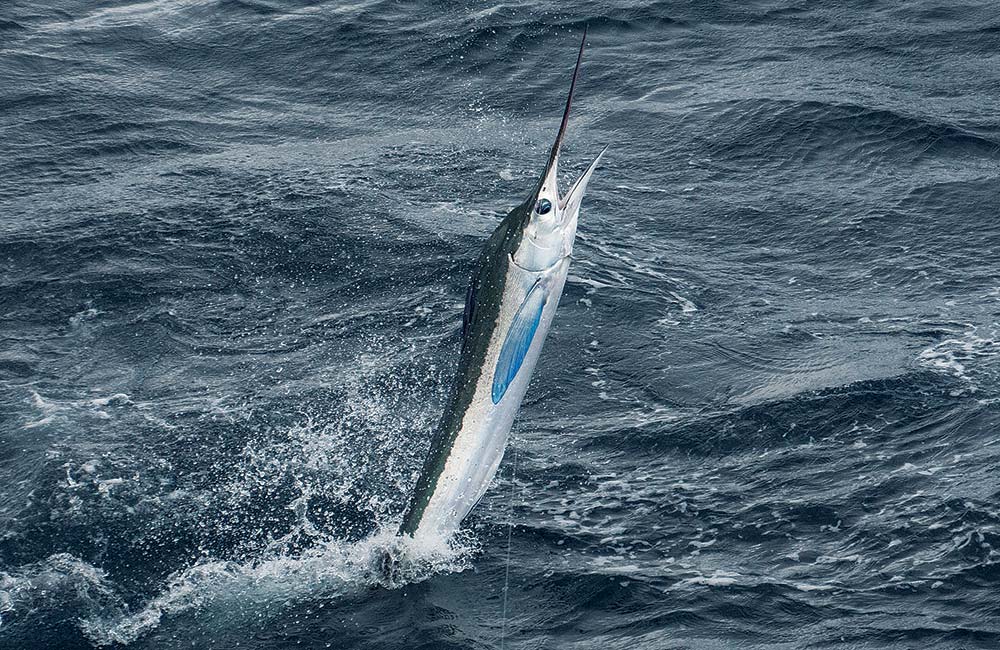
The second precursor for consistent white marlin action is the procession of warm-core eddies that spins off the Gulf Stream and migrates down the continental shelf in the late-spring and early-summer months. These bodies of warm water move in from offshore and usually arrive in the more-northern canyons first before migrating inshore, typically moving southwest as they go. The eddies pump clean, blue water from the Gulf Stream, and with it, they also bring bait and billfish. And while the early bite is well offshore, most of these eddies will eventually work their way into the canyons, and the western edges of an eddy can push inshore into 50 fathoms or closer, making for a short ride to great fishing. The arrival of the first eddy marks the beginning of the trolling season: The season progresses with the fishing getting more consistent through mid-July and August, and the season peaks in late August and well into September.
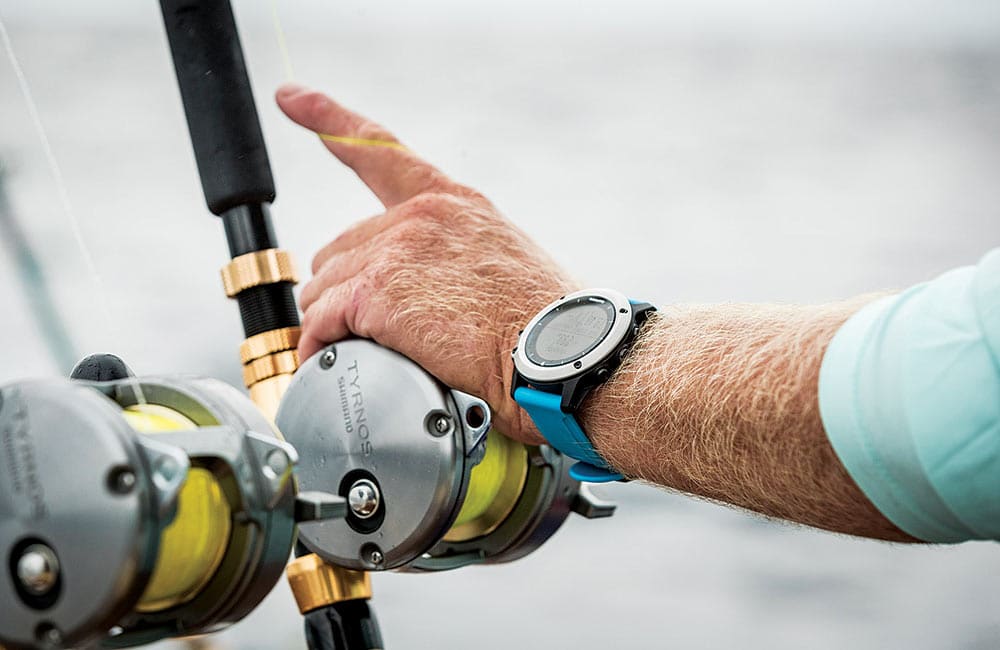
“For trip-planning purposes, I’d say mid-July through late September is the heart of the season and pretty much a sure bet,” Standing advises. “The nice thing about fishing out of Virginia Beach is you can make a left or a right when you leave the inlet depending on the time of year and where the action has been best; frequently the run is straight east because some of the most consistent fishing is directly offshore around the Norfolk Canyon.”
The Gear
Standing has targeted white marlin pretty much any way you can catch them, but he’s a traditionalist at heart and prefers trolling with rigged baits. He designed and built his Scarborough for it, and as I spent the day offshore with him, it became apparent that the boat is perfection personified. The 63 is a sweet ride, with everything you need to raise billfish, tease them to your baits, and chase them down — regardless of how many you have hooked at once.
“I troll four lines when targeting white marlin: two flats and two from the riggers, with four backups waiting to replace them or use as pitch baits,” says Standing. “We fish 20-pound-class outfits with 60-pound fluorocarbon leaders attached to a Bimini. The hook baits are small ballyhoo rigged with quarter-ounce chin weights and fished on 7/0 circle hooks, but it’s the teasers that really bring the fish into the pattern.”
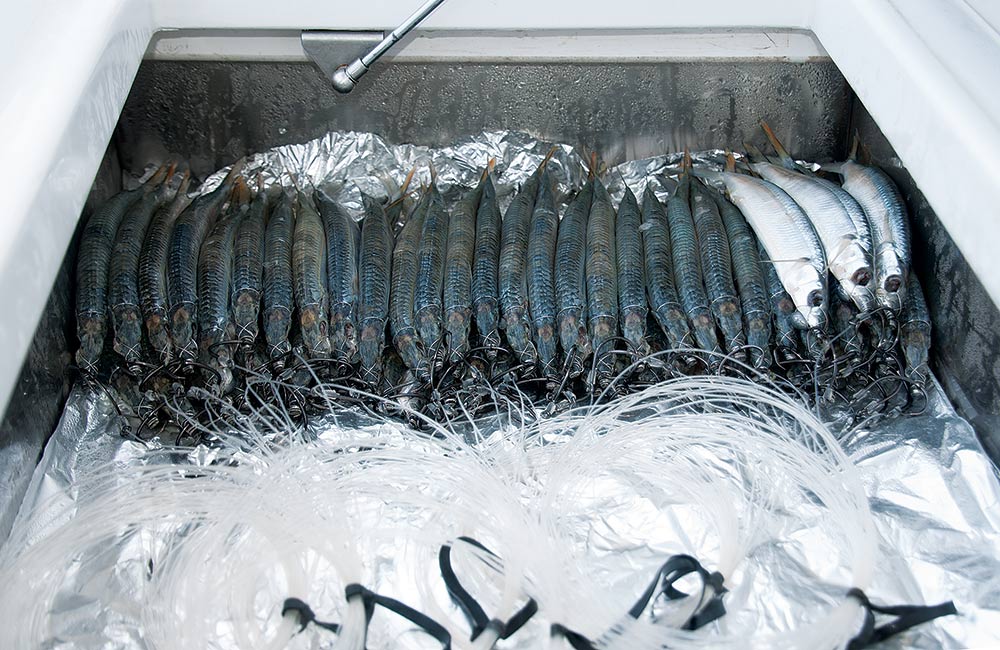
Standing runs two dredges and a pair of daisy chains as teasers, and he sets them up a little differently depending on whether he’s competing in a tournament or fun fishing. He rigs the dredges with all natural baits — mullet and large ballyhoo — when tournament fishing, but he replaces the inside baits with plastics when there’s no money on the line. He prefers green, pink or blue squid chains trailed by a ballyhoo under an Ilander.
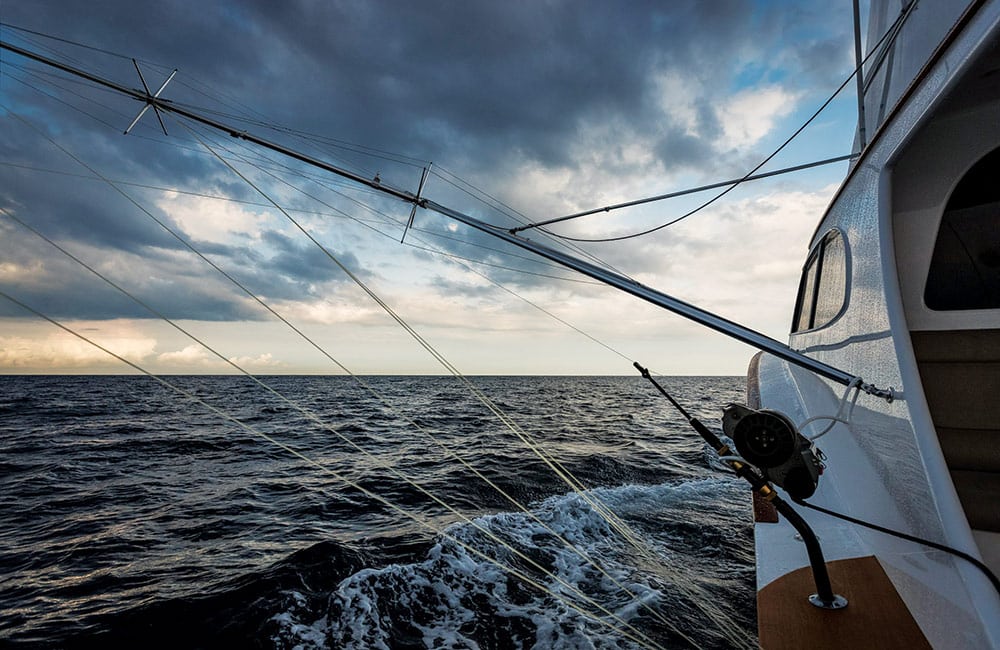
“If the water is real calm and the whites are balling bait, I’ll sometimes use a chain made from ballyhoo and drop my speed a little,” he says. “When there are blue marlin around, I’ll make sure to have a 30- and a 50-pound-class outfit rigged with ballyhoo under a Squidnation chugger head — the smallest ones on the 30 and a slightly larger one on the 50. The pitch bait we drop back is determined by the size of the blue marlin that shows in the spread.”
Standing recently equipped the Scarborough with the latest electronics from Garmin, including its new high-power GMR2526x HD2 25 kW radar for scouting birds and the GSD 26 chirp sonar, which he calls his marlin early-warning system.
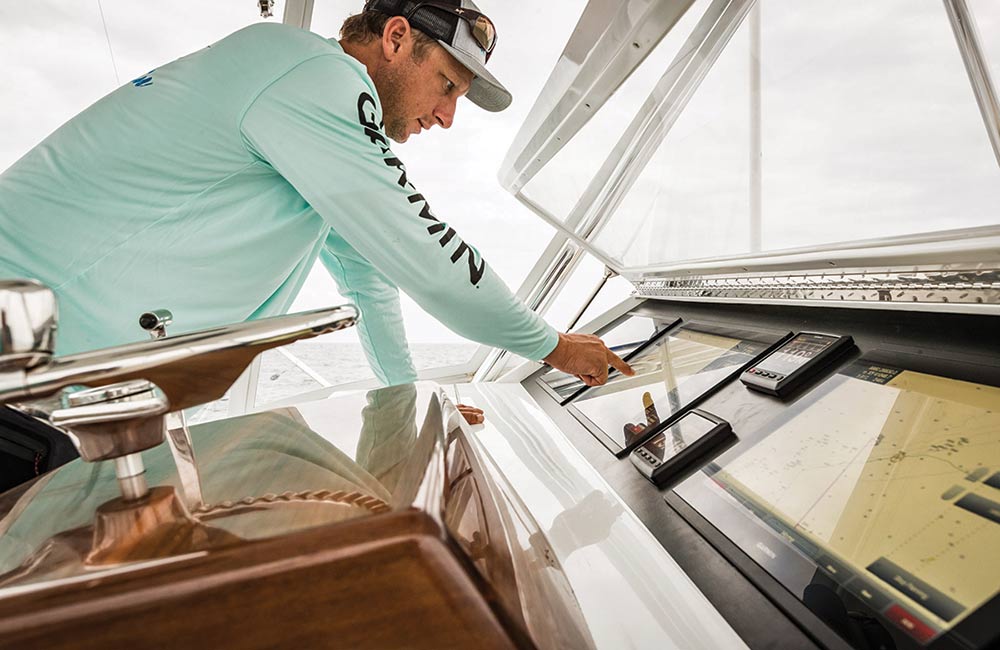
“The chirp marks marlin in such detail, I can tell you whether it’s a white, a blue or a sailfish, and know exactly how many are in a pod,” he says. And if that sounds like a boast, it isn’t. As he ran over a pod of bait when I was sitting on the bridge, he called out, “Two whites — get ready for a double!” Within a minute, the anglers were hooked up to a pair of feisty white marlin jumping away in different directions. He played the screen in reverse to show me the marks down about 100 feet, and the fish were clear as day.
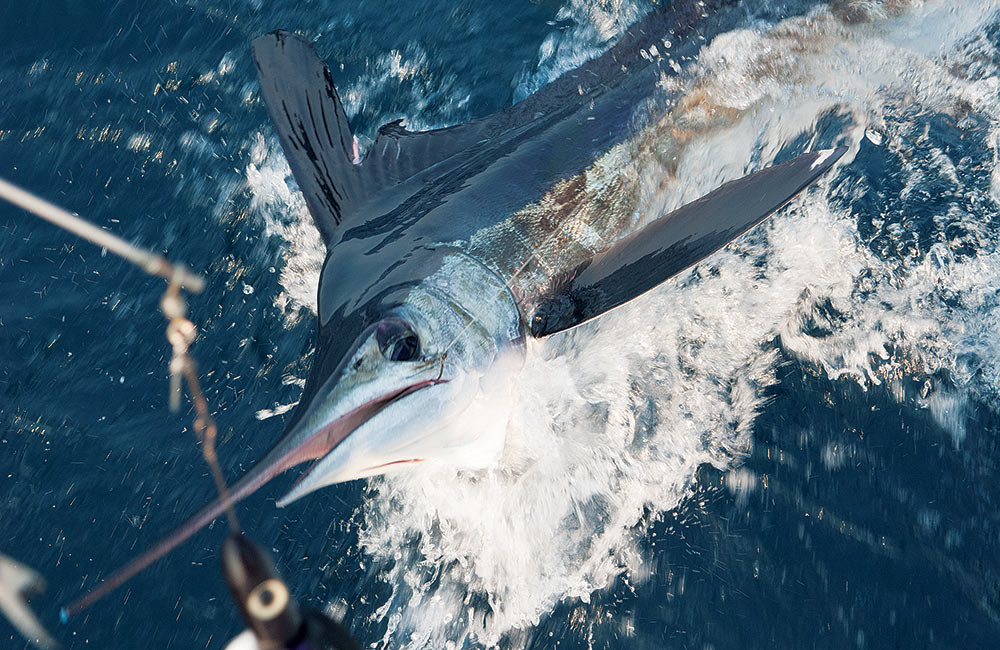
“During the Alice Kelly Ladies Billfish Tournament last year, I ran over a pack of eight sails — I could count every one — and we ended up hooking seven of them. It was a pretty wild display!” says Standing.
Finding Fish
“Virginia Beach is a very friendly place for fishermen,” Standing says. “During the season, we’ll have boats here from New York and New Jersey to as far south as Florida, and everyone gets along and trades information. It makes keeping track of the movements of the bait and marlin easier.” Visiting boats to the area are usually assimilated into the fraternity and help expand the knowledge base for everyone. He also keeps up with the action by relying on friends on local boats and others at ports to the north and south so he can compare what he is hearing to the latest satellite surface-temperature, chlorophyll and water-color charts from ROFFS. The charts might show multiple areas that look good, so having the latest intel from action on the water helps to narrow down where he wants to head when he breaks the inlet.
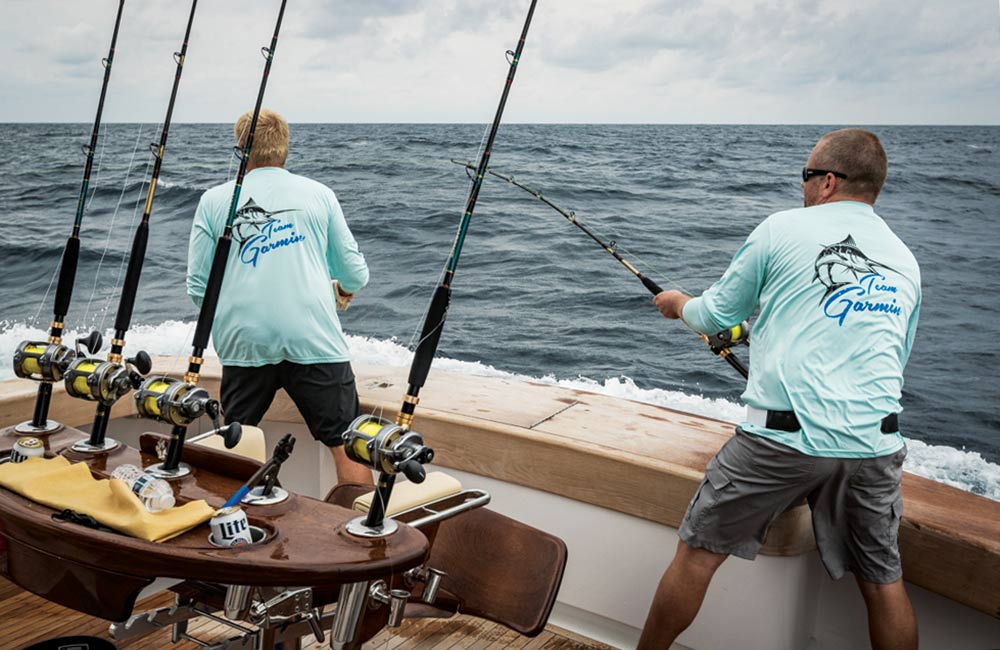
As we headed in from a successful day offshore, it became apparent that Virginia Beach is truly one of those destinations that gets overlooked because of its high-profile counterparts of Ocean City, Maryland, to the north and Oregon Inlet in North Carolina to the south. And Standing echoed those thoughts when we got back to the dock as he encouraged other anglers to come and enjoy it, emphasizing that the town’s mellow and family-friendly vibe offers so much more than what I was able to experience during my short trip. It also doesn’t hurt that the white marlin fishing can be off the charts as well.
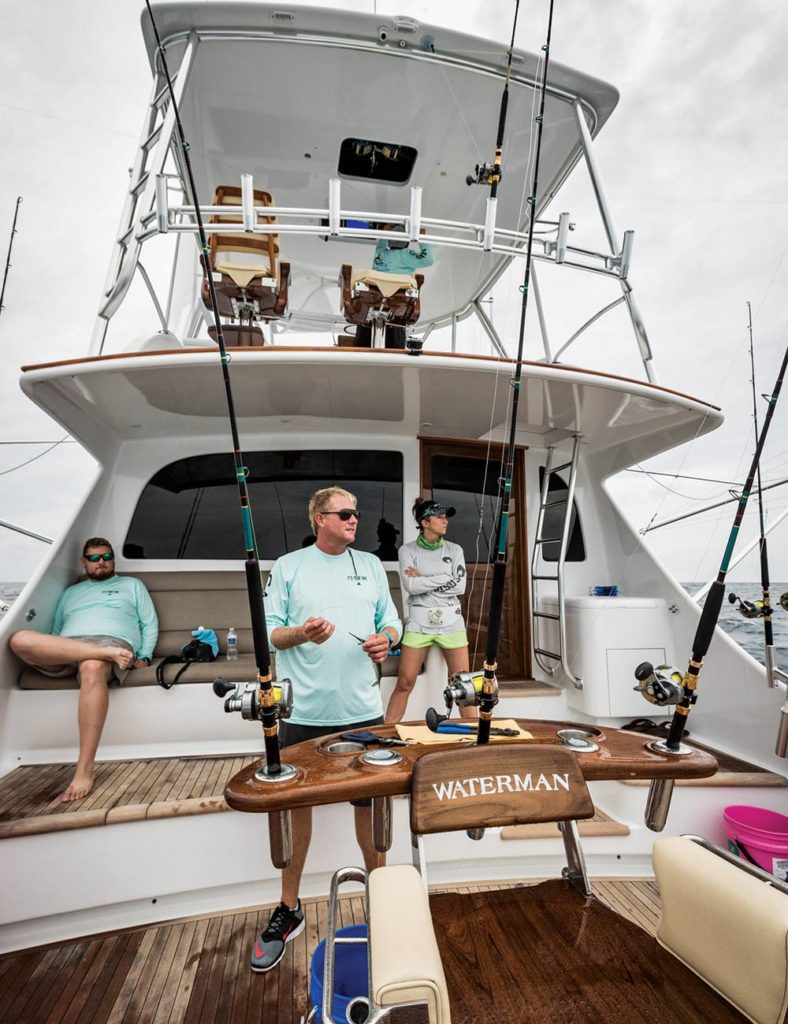
About the Author:
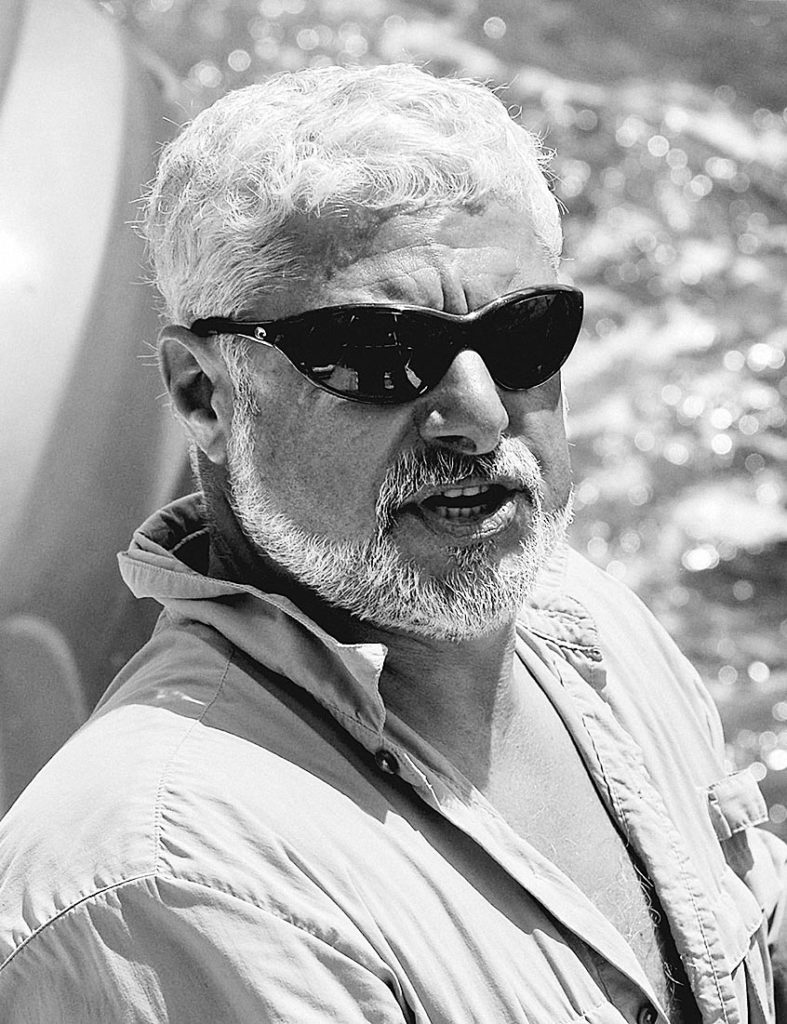
Gary Caputi is a noted author and angler with more than 35 years of experience chasing bluewater species on four continents. His passion for the sport and sport-fishing boats is reflected in the hundreds of articles he has written over the years.




